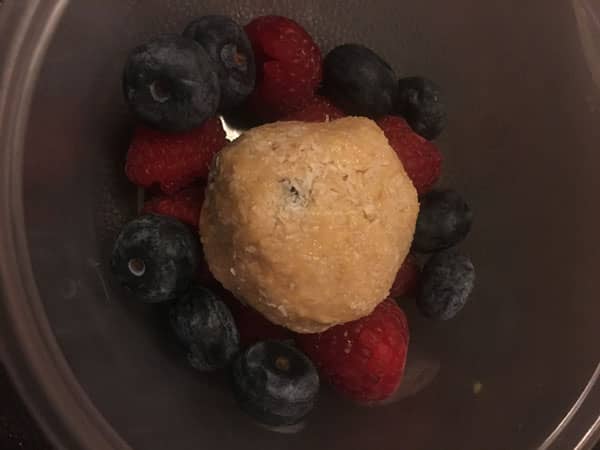Your Cart is Empty
August 30, 2019
The Monday of Fight Week is all about getting ready and ensuring everything is ready for Kai when he arrives. I travel with a portable electric stove, cooking herbs and spices, supplements and then sourced the food locally.
When you are competing overseas, sourcing high-quality foods can be difficult. Fortunately, the team at the UFC Performance Institute in Shanghai were able to give me insights into food availability. I was able to access organic produce and freshly imported high-quality meats by finding a Western Supermarket about 15 minutes from the city.

Another issue that many Fighters will find for an overseas bout is what to eat on the plane. Considering Kai’s travel time is close to 18 hours we have to be on top of this. Plane food is notoriously high in sodium, and when minimizing salt intake is one of our strategies to lose weight during Fight Week, this is not ideal.
Plane food is also trademarked by being heavy in carbs. The meals consisted of a protein, chicken or beef, with rice or noodles, a sauce, with sides of a bread roll, quinoa salad, and either rice pudding or yogurt and a muffin.
Not the most ideal food when finishing off an 8-week Fight Camp. Instead, Kai packed his own food for the plane; three meals worth of freshly prepared and seasoned chicken thigh, with avocado and blueberries. This would be enough to get him through the trip to Shenzhen.
For Fight Week, my focus is not on making weight, it is getting Kai in the best shape possible to give him the opportunity to have his best performance. We employ a low fiber, low residue diet, along with a water load and sodium restriction to get him down to weight.

A low fiber diet is used for three days prior to weigh-ins to reduce the amount of crap (literally) in the gut. Your intestines are really long and are constantly pushing broken down food through to the other end. This content can add up to 1kg on the scales, and by minimizing these foods, we get essentially free weight loss.
Water loading involves drinking an increased amount of water to encourage the body to urinate excess water. For my athletes, I follow a protocol that was established through research at the Australian Institute of Sport.
The amount of water consumed is determined by a simple equation. Bodyweight x 115 milliliters. This is completed for three days and then the day prior to weigh-ins we just sip on less than 2L throughout the day. It is during this period that the body will continue to urinate water out despite the intake being drastically reduced.
By constantly pushing water through, your kidney opens more aquaporins. Aquaporins act as gates that let water out, the more gates you have open the more water you let out. If you want to learn more about this check out The Fight Science Podcast episode with Dr. Reid Reale
The reason we limit sodium is that it holds water. By reducing the amount of sodium in the body you hold less water, thus making you lighter. The easiest way to limit salt is to avoid store-bought sauces, condiments, soups, and do not add it any cooked food.
The last strategy we use is glycogen depletion. I say depletion but we are not completely depleting, just lowering to get some easy weight loss. As has been outlined in previous articles, glycogen is the storage carbohydrate in your muscle and liver. For every 1 gram of glycogen in there, you hold between 2 and 3g of water with it. By reducing glycogen, you remove 3-4 grams of weight from your body.
You do this by reducing the total amount of carbohydrates in the diet and utilizing higher intensity training sessions to burn through the stored carbohydrates. This does not mean Kai is not eating carbs, he is eating them every day. Since we track what he burns during his workouts, I know how much to give him so that he is adequately fuelled for the session but finishing with as minimal glycogen as possible.
By utilizing these strategies, I can still feed Kai three main meals a day, with snacks in between and we slowly reduce his weight by up to 1.5kg (2.75lb) each day leading to the weigh-ins. Next, I will outline, the final fluid manipulation, rehydration and reload techniques we use to get ready for war.
September 07, 2024
September 07, 2024
September 06, 2024
Sign up to get the latest on sales, new releases and more …
